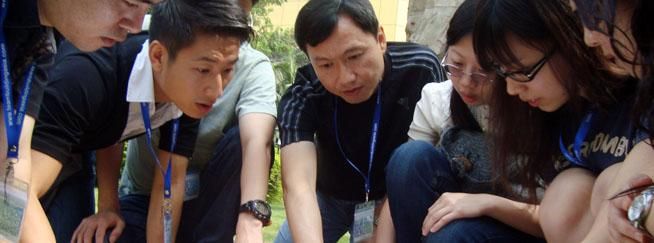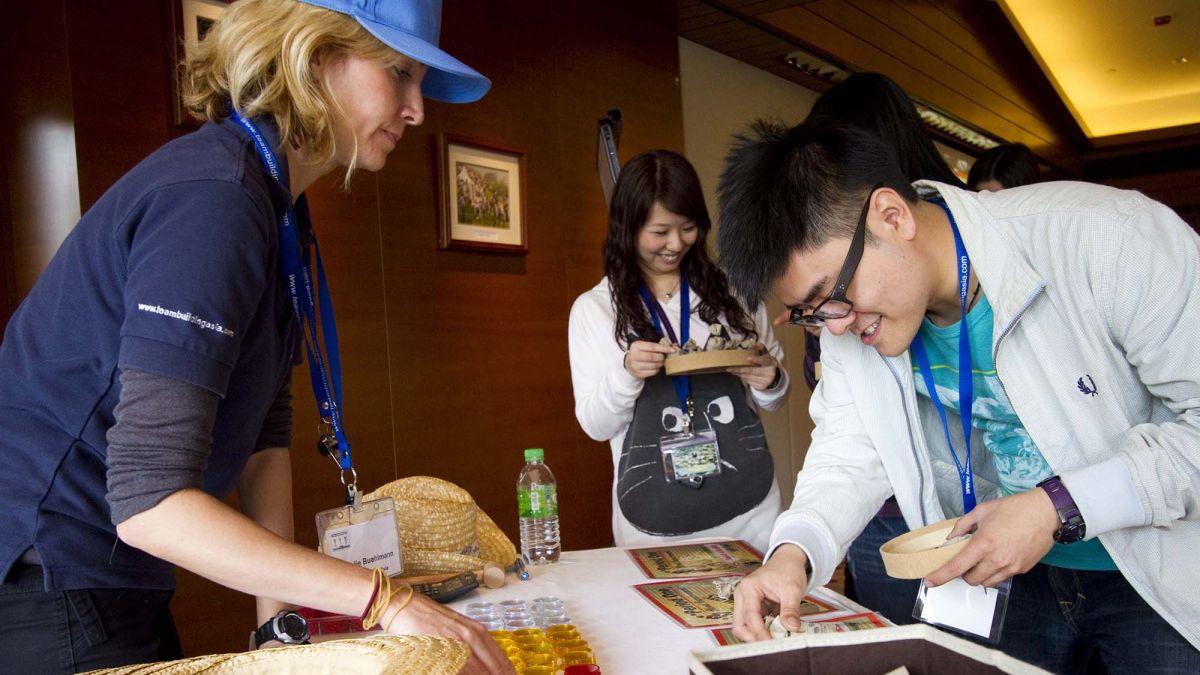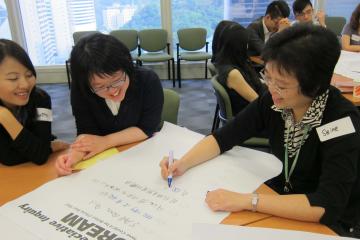Increasing the productivity of your company should always be at the forefront of your work process. While investing in technologies like virtual task tracking software and to-do list applications may seem like the magic fix, the key to productivity has always, and will always be the people in your team and how they work together. So how do you encourage people to be more productive?
Increase your individual productivity
Leading by example will always be the cheapest and most effective way of changing workplace habits and increasing productivity. So let’s first look at what you individually can do to be a more productive worker and how you can communicate these strategies to your team:
Do you get enough sleep?

No matter what field you are in, what tasks you have and what hours you have been expected to work in the past. If you are not getting enough sleep, you are not being the most productive version of yourself. While you may believe you are one of the rare 1-3% of the population who can thrive off 5-6 hours of sleep a night, it is highly likely that you are robbing your brain of the those extra 2-3 hours that could take you to 100% productivity. Studies show that if you wake comfortably with no alarm clock at the right time you have officially reached an optimal sleep pattern.
How do you encourage your team to get enough sleep without tucking them in?
Obviously you have no control over what your employees get up to in their spare time but you can stop them from filling it with work.
The time you leave the office will dictate what hour the majority of your staff leave, for fear of being seen as a ‘slacker’, a substantiated fear that leads to perceived ‘over-workers’ receiving higher bonuses and more job prospects though they are often over-filling their work quotas and overcompensation on their hour sheets to appear harder working.
Put parameters on emailing hours
Setting email appropriate hours is also a good way of ensuring employees don’t stay up sending emails into the early hours of the morning. There is a huge body of evidence that suggests that email is the largest drain in work productivity, claiming 28% of the average workday, so any step to minimizing email is beneficial to your company. Be strict on this point. If anyone sends an email past a specified time, or on a topic that could easily have been addressed in person, call them up about it. Let them know that their attempt to look more productive is causing a drain on the rest of the team.
While you have some measure of influence minimizing the amount of email used in your team, you have no ability to stop it from outside influences. To combat time wastage allow yourself 3-4 set times to check your email, then close the tab so it does not tempt you with never-ending notifications.
Setup 90-minute working intervals
Encourage your team to work in 4-5 90-minute intervals. Beyond 90 minutes productivity tends to decline.These 90-minute blocks should be goal oriented to achieve maximum productivity. Be vocal about your goals for your 90-minute blocks and ask the team what they are doing for the next 90-minutes. Not only will your 90 minutes work harder for you than a 5-hour slog. It is helpful in documenting your hours at the end of the day.
Take frequent ‘screen’ breaks
You should also encourage short breaks between the intervals, whether it be a walk around the block, a bathroom break or a tea break.
Talk to your staff about what works for them

90-minutes maybe too long for some and too short for others. You may have team members who are most efficient at 9-1 and would rather work for 4 hours in the morning on a task, an hour at the gym and the rest of the day working through the less taxing parts of their to-do list. Another employee may find the afternoons to be the time when she feels she can achieve maximum flow.
Encourage your staff members to tell you how they work best and try and factor it into how you plan the week. While things always come up, working proactively rather than re-actively is essential to increasing productivity. Allow your staff time to be proactive and allow them time to be reactive, to answer emails and follow up tasks. Flexibility is key.
Allow working from home
Travel website Ctrip recently experimented with allowing a portion of their staff to work from home for 9 months. At the end of the experiment they analysed the performance data and found that home-workers were 13.5% more productive than their in-office counterparts. They also had higher staff retention with the home workers and higher reports of job satisfaction. While sending employees to work from home full-time may not work for your business, allowing a day or two a week to work from home can greatly increase your company productivity and improve work satisfaction, particularly for employees with children or elderly parents they need to take care of.
Claim back hours of lost productivity and cancel the meetings
Pointless, ineffective meetings are a huge drain on your staff’s time and energy. You have undoubtedly experienced the eye-rolling frustration of being stuck in a meeting that is going nowhere and is going to cause you to stay late at work to make up the time. Professionals lose 31 hours a month in unproductive meetings, that is 4 workdays and an astronomical amount of money per organization that is wasted in effective meetings. A study last year ‘Get Up, Stand Up’ suggests performing standing meetings. Sit down meetings are seen as ‘downtime’ rather than work and often involve a lot of doodling. Standing meetings reduce the length of meetings by virtue of discomfort, and get to the point a lot quicker. If you are going to stage a proper sit-down meeting, it is vital that you spend at least an hour preparing the meeting to increase its chance of being effective.
Invest in team building for greater team productivity

While improving individual workflows will greatly increase the productivity of your company, it will not guarantee that all members will work well together. Team building is training for how your company will both cope in unforeseen situations and improve their current work processes.
The most vital element of team building activities is the way they work concertedly on opening up communication channels. Good communication is the key to great teamwork and thus productivity.
Part of the reason why meetings are so long and ineffectual is because the members are not really listening to each other or don’t know how to get their point across. At the core of all team building activities is effective listening. Team building also allows teams to interact in a non-office environment and understand a little more the personalities, strengths and weaknesses of their peers.
Productivity starts with inspiring your team
Most importantly, as a leader you have to inspire your team to want to be productive. There is little use implementing new processes or techniques if your team does not enjoy their work or have no goal they are working towards. Once when your staff is incensed by the team drive, will they become more productive for your company.




